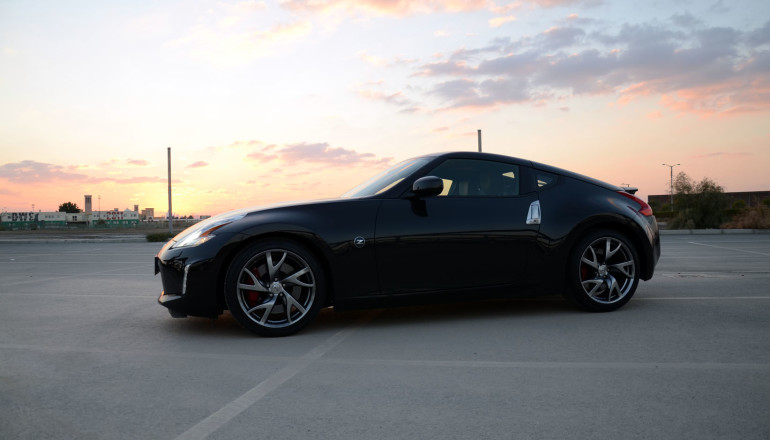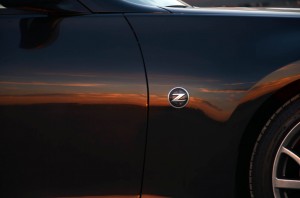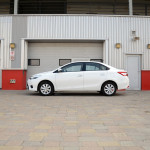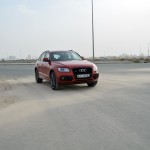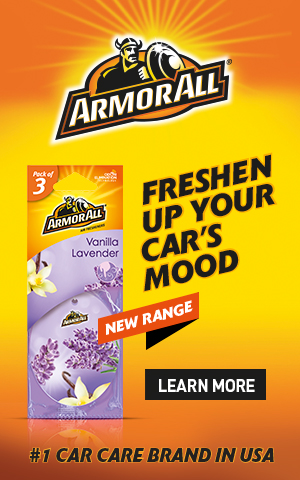The Nissan 370Z is like a burger meal from old McDonald’s kitchen. Fast, tasty, and you can upgrade to fizz and fries for just a little extra. Ever since it dropped its price, and its roof as an option, the sportster has been a favourite among those who want an affordable sports car with upsized power. It really doesn’t matter that the 370 Z is a two-seater because few would actually miss riding pillion in this firmly disposed sportie. The pleasure is totally reserved for the one in the driver’s seat.
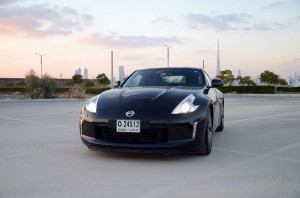
3.7 L DOHC V6 aluminium-alloy engine / 6-speed manual and 7-speed automatic transmission / 328 hp @ 7000 rpm, 363 Nm torque @ 5200 rpm / 53:47 weight distribution
UPSIDE: Powerful high-rev engine, Catchy muscular looks, Good cabin music, Convenient gadgetry
FLIPSIDE: Long rides could feel harsh, Could miss the ‘hugging the ground’ feeling, Occasional body lean
THE PRICE: AED 139,000 and AED 149,000 (with navigation, bluetooth audio streaming and rear view camera), AED 144,000 for manual, AED 169,000 for convertible
The Drive
The Nissan 370 Z looks and feels solid. A feeling underpinned by its muscular haunches, the heavy door closures, the progressively heavy steering, the stiff suspensions, a pronounced downshift grip and the remarkable brakes that work meticulously even while cornering.
The 3.7L engine generates 328 horse power with 363 Newton metres of torque driving it. The torque number might not sound much for a sports car but thanks to its availability in the mid-cycles, the 370Z propels itself early to high speeds, especially on the go. The 0 to 100 was a steady climb, culminating at 5.4 seconds with the rpm needle easily inclined towards the red line.
The engine fires up to life with a grunt and continues to proclaim the power all along the drive. Surprisingly quiet on settled drives, the raspy mid mid-cycles attains a grating treble as you explore higher, but the 7-speed transmission gets there quickly and settles down before it’s too harsh for your nerves.
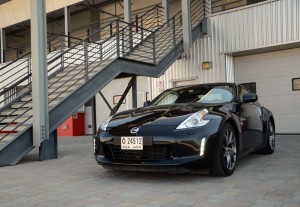
19” forged RAYS alloy wheels / 4-piston front brake callipers / Magnesium paddle shifter / HID headlamps with autoleveling and washer / LED taillamps / Daytime Running Lights
The seats are positioned midway between sporty low and normal, with the cheeks hugging you in close comfort all along. Only in quick lateral manoeuvres, sometimes you end up feeling the weight of the car on your ribs. Despite an occasional torque steer, the car displayed a tremendous ability to hold its ground even with the traction control off and offers the seasoned hands a lot to play around with. While it’s hard to leave the steering on its own in tricky curves, the expected oversteer in this rear-drive car did not make itself felt too often. The powerful brakes of the 370 Z displayed minimum skid and has a lot of grip on the tarmac.
The good thing about the Nissan 370 Z is that you can get more out of it if you wish to. That goes for even the fuel efficiency. The overall figures shown on the onboard meter was 5.9 kms per litre but I managed to squeeze out 6.68 kms per litre (15litres per 100km) with a good mix of slave-driving to boot.
The Design
The 370Z has undergone minor design changes and looks all the better for it. The front and rear lamps are almost identical in design with their outwardly turned groove. Sculpted to shape – shorter, lower and starting its descend rearwards right from the A-pillar, somewhat like a Porsche, the new model designs a large landscape of aerodynamics all the way to the rear spoiler.
Cabin and Controls
No other sports car in the affordable range offers so much of everyday gadget support, especially when compared with the stripped-down sort of approach of a Toyota 86. The seven-inch touch screen with an alternative control knob in place follows the Infinity G37, just as it shares its hot-pot. The ease of use that impressed me in the G37 goes for the 370 Z as well – an excellent navigation system and a one step Bluetooth connection made things fairly simple.
The cabin material is of good quality – rubber and hard plastic for most part with touches of aluminium. In true sport-spirit, the seats are coarse yet comfortable and additionally provides heating, lumbar support and tilt functions. While you might expect the narrow windscreen image in the mirror to raise an issue, the wide vision till the B pillar – beyond which there’s no glass anyway – along with the sweeping side view mirrors took care of the surroundings.
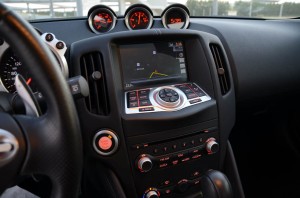
The 370 Z is a natural for high revs. Accompanied by a flashing red alert, the red line lowers its guard without a fuss.
Right on top of the console sits three small dials facing the driver displaying the water temperature, the vault meter, and… time, where I would have expected a torque meter or something. The digital clock was a superfluous element in my car as the hours and minutes were already blinking on the touch screen but then, the base trim won’t have the 7” navigation screen. Driver information like fuel consumption, average speed and all that would still be available even without it.
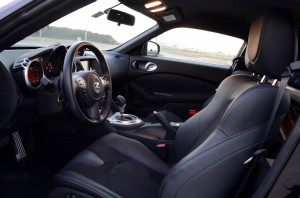
COMFORT: Cruise Control / Intelligent Key / 8-speaker Bose audio / Heated seats / Bluetooth / Leather seats
Family Drive
One thing the Nissan 370 Z doesn’t squeeze in is hitchhiker comfort. Those sportcar-trademark unusable rear seats are absent in Nissan’s sportster. So there wasn’t much of a family drive this time, but anyway they weren’t going to miss this bumpy ride.
The rough ride of the 370 Z is in sharp contrast with its almost audiophile quality 8-speaker Bose system. Apparently, Nissan expects a 370 Z driver to have an ear for music but you would have enjoyed it more, only if the wind noise and the road noise let you.
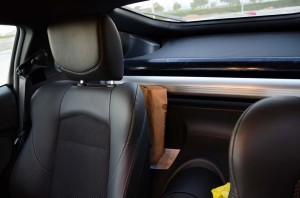
SAFETY: 6 airbags standard, Vehicle Dynamic Control (VDC), Anti-lock Braking System (ABS), Electronic Brakeforce Distribution, Brake Assist
Inside the cabin, storage is restricted to the armrest compartment and the glove box, which is pushed ahead for larger leg room. Now, the good thing about not having rear seats is that the smallish pits there could be used for stuff you don’t want running about. A large polyurethane tonneau covers the boot area so that you aren’t bombarded with stuff you stack up there, every time you brake.
The Essential Nissan 370Z
All said, while the Nissan 370Z is great value and offers everyday features, the firm settings could make itself felt on long drives. And while it has all the makings of a good sports car, the drive somehow falls just shy of what I would call exhilarating.
If the 370 Z is indeed the driver’s choice in its segment, it is because of its engaging power distribution when compared with the Toyota 86 or the 3.8L Hyundai Genesis Coupe. Where the Hyundai scores is in having proper space for four full-grown people while the low-flung Toyota 86, trailing in power, makes up with more ‘down-to-earth’ realities of sporty driving. But then, you don’t mind paying just an extra buck for those fries and fizz, for it’s the closest a sub-150K price tag can get you to that ‘track and road’ package.
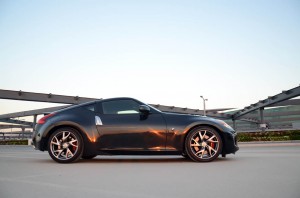
For only AED 10,000, you can add 7” navigation screen, rear view camera and Bluetooth audio streaming. No reason why you shouldn’t.
Drive Courtesy: Nissan Middle East
Pictures: Sudeep Koshy

